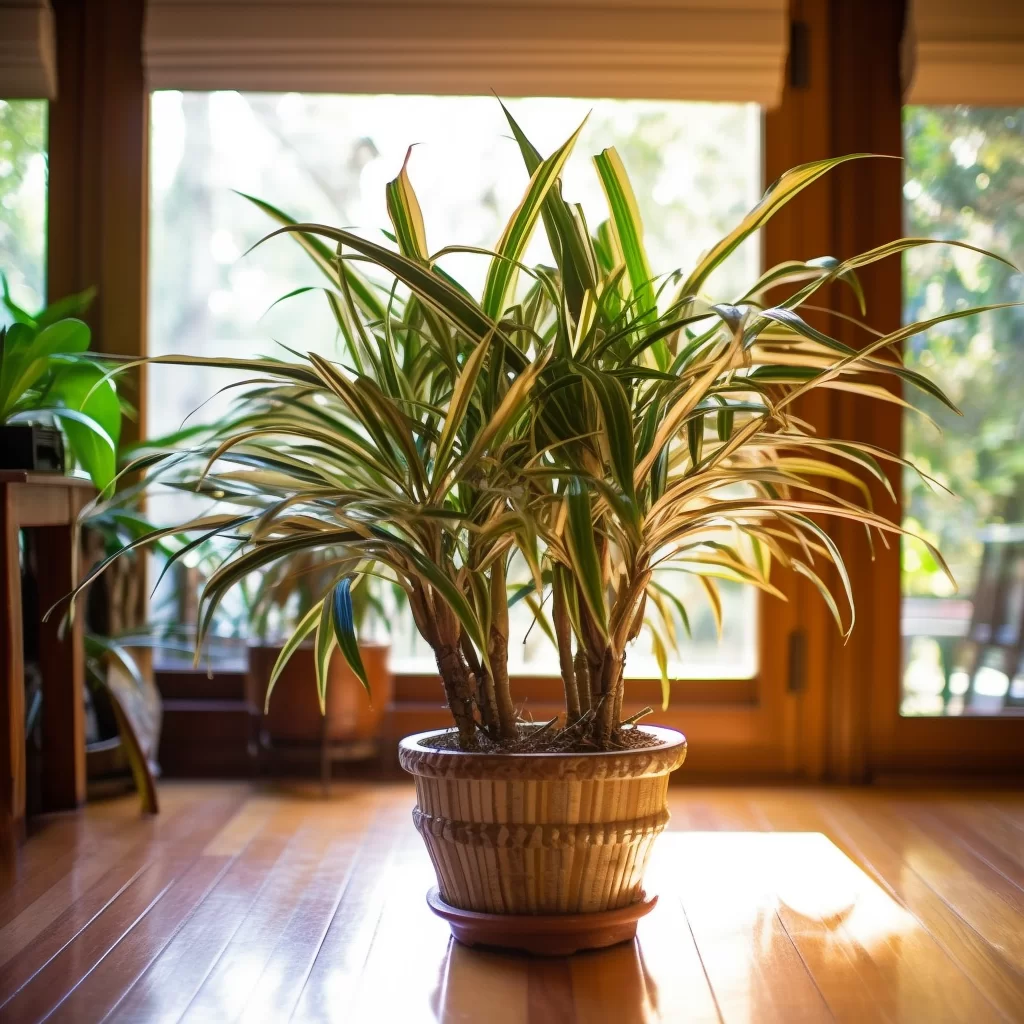Story of Day :
Contents
The Dracaena House Plant: A Complete Guide and Care Tips
Are you looking for a houseplant that is easy to care for and can thrive in low-light conditions? Look no further than the dracaena! This tropical plant is a favorite among indoor gardeners due to its hardiness, versatility, and natural beauty.
In this guide, we will provide you with all the information you need to grow a healthy and happy dracaena in your home.
What Is a Dracaena?
The dracaena (Dracaena spp.) is a genus of plants that belongs to the Asparagaceae family.
It is native to Africa, but it can also be found in Asia and Central America.
The most common species grown as houseplants are D.
marginata, D.
fragrans, D.
reflexa, D.
sanderiana, and D.
deremensis.
The leaves of the dracaena are long and slender with colors ranging from green to variegated tones of yellow or white depending on the species or cultivar.

Care Tips for Your Dracaena
- Light: While some species such as D.
fragrans prefer bright indirect light; most others do well in moderate light levels or even low-light conditions making them perfect for indoors where natural light can be limited.
- Water: Dracenas like moist soil but they do not tolerate standing water so always make sure their soil is well-draining by using pots with drainage holes at their base allowing water through without causing root rot by standing water at roots.. Watering frequency varies depending on factors like temperature humidity level or size pot size but generally it’s recommended give your plant enough water when top inch soil dries out.
- Temperature and Humidity: Dracenas prefer warm temperatures between 70-80°F and can suffer in temperatures below 60°F.
They also do well with moderate humidity levels around 40% to 50%, which makes them great candidates for indoor environments where the air is often dry.
Propagation
The dracaena can be easily propagated through stem or tip cuttings, or by separating offsets that grow from the mother plant’s base.
To propagate your dracaena, follow these simple steps:

- Cut a stem or tip cutting of about four to six inches long using a clean pair of pruning shears.
- Dip the cut end into rooting hormone powder and place it in a pot filled with moist potting soil.
Cover it loosely with plastic wrap to increase humidity levels around your cutting so roots can sprout faster, making sure not to let plastic touch foliage otherwise it will cause rotting.
- Place your container in indirect light but avoid direct sunlight .
Keep the soil moist but not wet by misting with water occasionally or use bottom watering method which involves placing pot in shallow tray filled up partially with water ensuring no standing water at base of pot that could cause root rot .
- A new root system should develop within two months, after which you can remove plastic cover on container and your plant should continue growing as normal!
Pests and Diseases
Dracenas are prone to some common pests such as spider mites, mealybugs, scale insects among others; However they are less susceptible than other plants due to their natural pest resistance qualities like thick leaves that prevent pests from piercing through plant tissue causing damage.
Some of common diseases such as leaf spot, root rot, or fungal growth could affect your plant’s health when overwatering occurs.
Most of these conditions can be prevented by proper care and maintenance such as avoiding overwatering and keeping humidity levels in check.

Conclusion
The dracaena is a low-maintenance houseplant that is perfect for beginner gardeners or anyone looking for an easy-to-care-for plant that can thrive in low-light conditions.
By following the care tips outlined in this guide, you should be able to grow a healthy and beautiful dracaena in your home.
Remember to keep your plant well-watered but not wet, give it enough light but avoid placing it directly under the sun; Always ensure its soil is well-draining so roots don’t suffer damage from standing water at roots.
Above all else, enjoy the natural beauty this tropical houseplant provides! Happy Gardening!